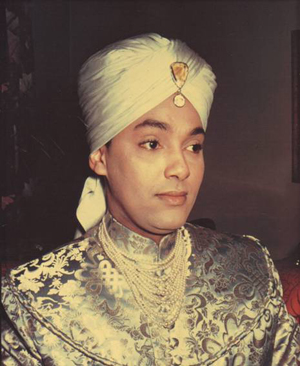A Chosen Exile: A History of Racial Passing in American Life by Allyson Hobbs (review) [Cutter]Posted in Articles, Book/Video Reviews, History, Media Archive, Papers/Presentations, United States on 2015-10-23 01:01Z by Steven |
A Chosen Exile: A History of Racial Passing in American Life by Allyson Hobbs (review) [Cutter]
African American Review
Volume 48, Number 3, Fall 2015
pages 381-383
Martha J. Cutter, Professor of English and Africana Studies
University of Connecticut
Hobbs, Allyson, A Chosen Exile: History of Racial Passing in American Life (Cambridge: Harvard University Press, 2014)
The historian Allyson Hobbs opens her book A Chosen Exile: A History of Racial Passing in American Life with an anecdote about a young child living on Chicago’s South Side in the late 1930s who is light enough to pass for white. Her parents (who are also light enough to pass) make the heart-wrenching decision to send her to live as a white person in Los Angeles, without them. She cries, pleads, and begs to stay with her parents, but they are adamant. Many years later when the father is dying the mother calls home the daughter, now a young woman who has married a white man and has had white children, but she refuses to return. This incident—sourced as “one of my family’s stories” (4)—seems an unusual way to begin a book titled A Chosen Exile, for the young girl’s exile is not chosen by any means. It is also a curiously ambiguous story. We may wonder (for example) why the parents do not go with the child, whether she has relatives in California to whom she is sent, and what age she is when this event occurs. This tantalizing story leaves a reader with more questions than it answers, and it belies the richness of Hobbs’s work in the book as a whole. Hobbs does not use this anecdote to elucidate some of the mysteries around passing or the difficulty of excavating the history of the racial passer, who disappears into whiteness. Instead, the story is deployed in support of the central argument of her book—that “racial passing is an exile” (4) and “the core issue of passing is not becoming what you pass for, but losing what you pass away from” (18). But how can we know that passing is “losing what you pass away from” based on this anecdote? In Hobbs’s book, the young girl is never heard from again. Perhaps she found freedom in her whiteness, or perhaps not. She might have had a permanent sense of exile, but this is never elucidated.
The use of this anecdote reflects a systemic flaw in Hobbs’s otherwise powerful and eloquent book. Her source material often opens up in provocative ways the can of worms that is racial passing, but then she sometimes forces those messy, squiggly worms back into a single “can”—the frame of family loss and exile. Hobbs makes the dubious claim that “historians and literary scholars have paid far more attention to what was gained by passing as white rather than to what was lost by rejecting a black racial identity” (11). To counter this tendency, she mines historical sources on passing “to discover a coherent and enduring narrative of loss” (24). At various points, she does acknowledge the shifting meaning of racial passing; for example, she states that “to pass as white varied and cannot be collapsed into a singular narrative” (15) and that “passing was by no means a static practice” (25). By the end of the book, her argument evolves into a more nuanced one: “Loss was a prerequisite of passing. But the losses that passing demanded were not all the same for those who passed. … For some, [passing] was undoubtedly a bitter bargain. But for others, the connection with oneself and one’s past had been lost long ago” (230). Hobbs here articulates some of the plural possibilities of passing—the way it can come to mean both conscription to a certain racial ideology and liberation from this very same ideology at one and the same time.
Hobbs’s book might have put forward from its start, then, a slightly more nuanced overarching framework. But in many ways this book is a very valuable resource for scholars interested in the history of passing, as well as students who may need a broad overview of the phenomenon. It examines the more-than-250-year history of passing in the United States, reaching back to the time of the American Revolution and forward to our current so-called “mulatto millennium,” or “Generation E.A.”—“ethnically ambiguous” (276). Most unique about the book is the wealth of source materials (much of which is…
Read the entire article here.

/https://public-media.smithsonianmag.com/filer/64/44/6444819b-6bd6-4839-96ea-eacf625b136e/nov2015_l09_slavetrail-web-resize-v3.jpg)
